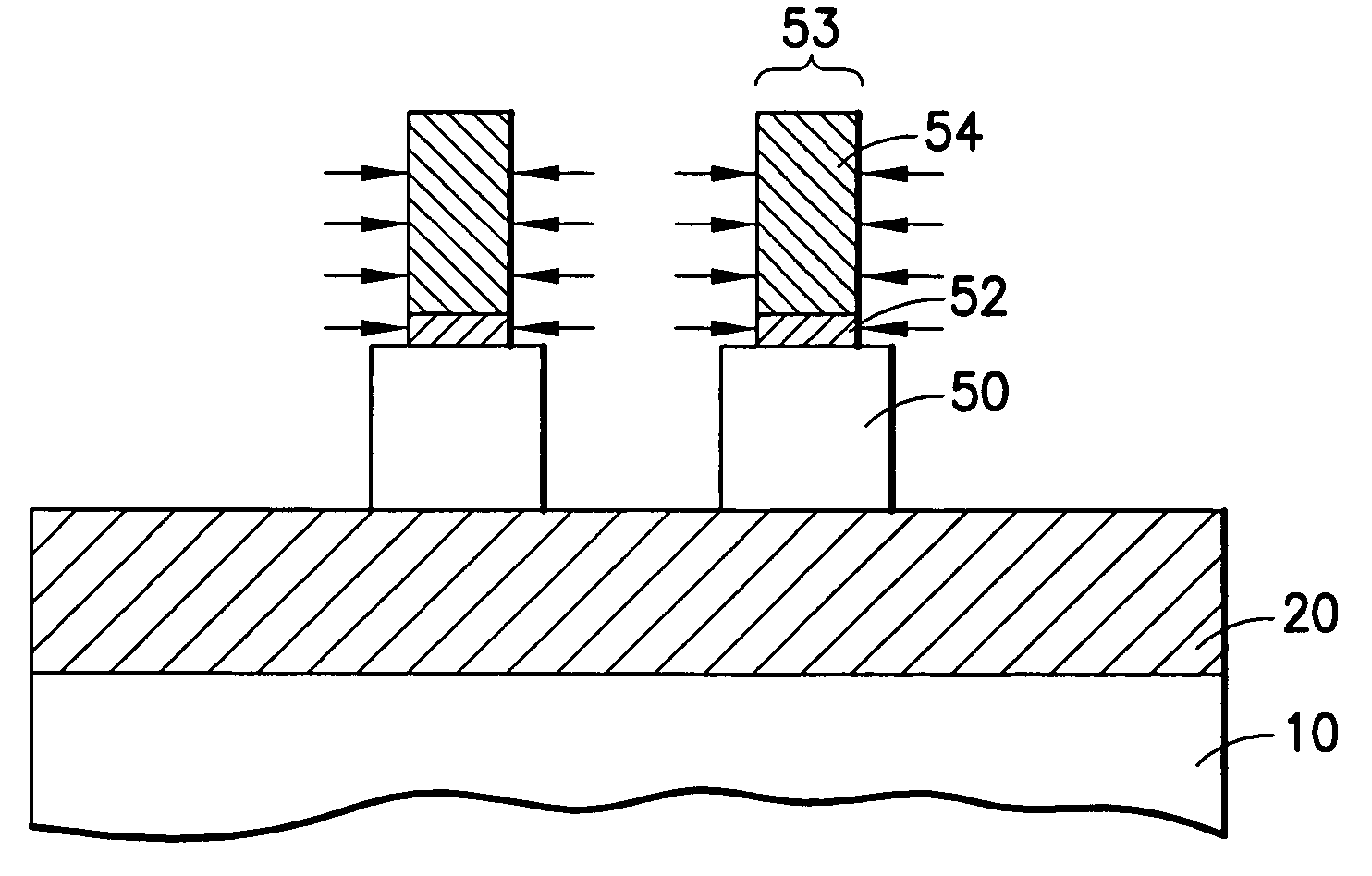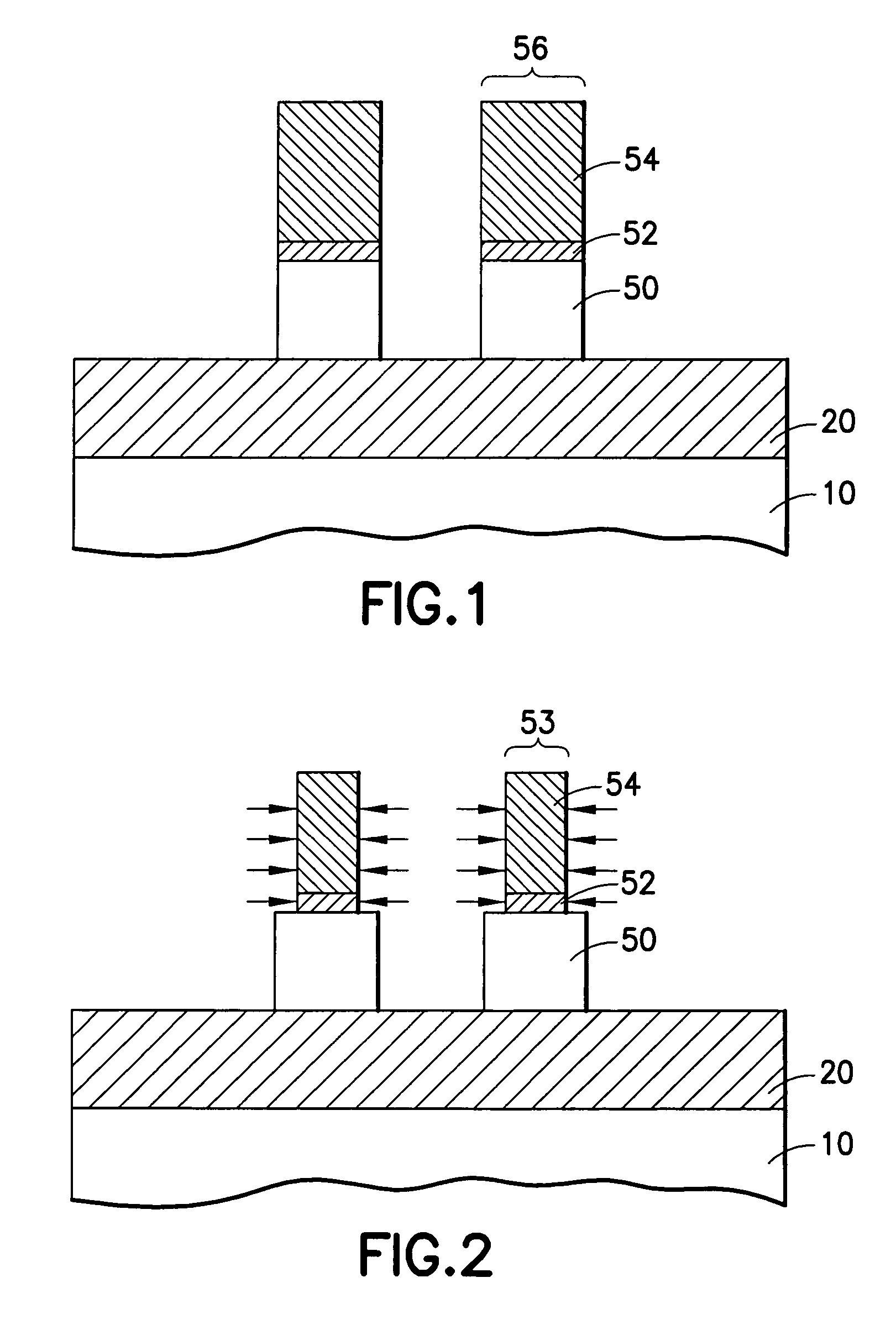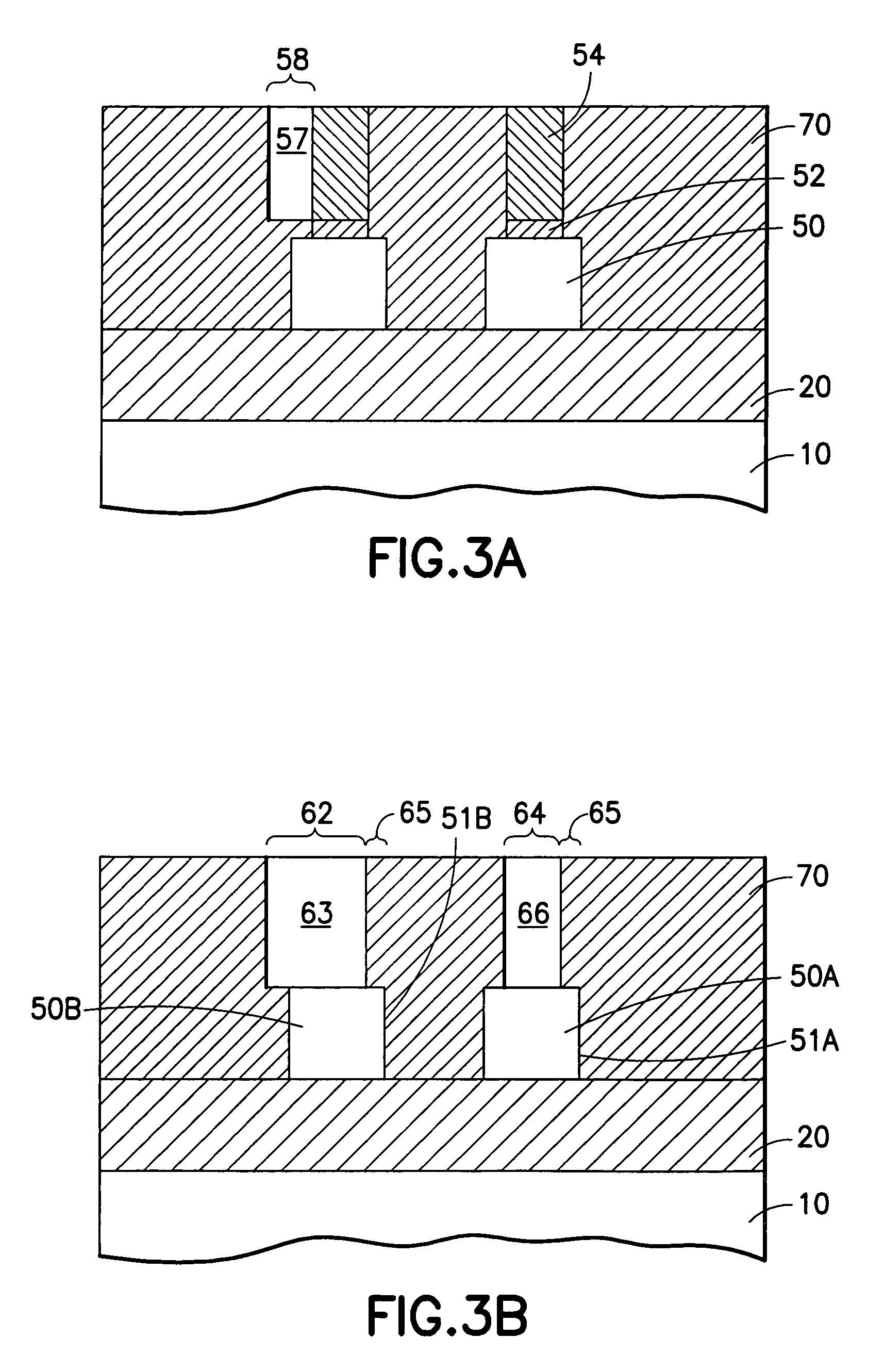Pull-back method of forming fins in FinFets
a technology of finfets and fins, which is applied in the direction of transistors, semiconductor devices, electrical apparatus, etc., can solve the problems of degrading the ability of the gate to control whether the device is placed or not, affecting the operation of the gate, and increasing the difficulty of mosfets
- Summary
- Abstract
- Description
- Claims
- Application Information
AI Technical Summary
Benefits of technology
Problems solved by technology
Method used
Image
Examples
Embodiment Construction
[0036]This invention describes a process for forming controlled, thin body fins for a FinFET device, in which the uniformity of the thickness of the fins does not depend on alignment of a stepper. The process uses a pullback step that defines the width of the hardmask that sets the thickness of the fin. Thickness control of the fin body is a critical factor in the fabrication process, as it directly results in FET threshold variation.
[0037]This specification describes two integration schemes of the pullback fin process, the first scheme is implemented in a self-aligned source / drain process flow and the second in a source / drain block process flow.
[0038]In each case, the starting point is a SOI or bulk silicon wafer. In the case of a SOI wafer, the fin height will be determined by the thickness of the silicon. The layer of semiconductor that contains the fins will be referred to as the fin layer, whether the substrate is bulk or SOI.
[0039]Referring now to FIG. 1, there is shown in cro...
PUM
 Login to View More
Login to View More Abstract
Description
Claims
Application Information
 Login to View More
Login to View More - R&D
- Intellectual Property
- Life Sciences
- Materials
- Tech Scout
- Unparalleled Data Quality
- Higher Quality Content
- 60% Fewer Hallucinations
Browse by: Latest US Patents, China's latest patents, Technical Efficacy Thesaurus, Application Domain, Technology Topic, Popular Technical Reports.
© 2025 PatSnap. All rights reserved.Legal|Privacy policy|Modern Slavery Act Transparency Statement|Sitemap|About US| Contact US: help@patsnap.com



